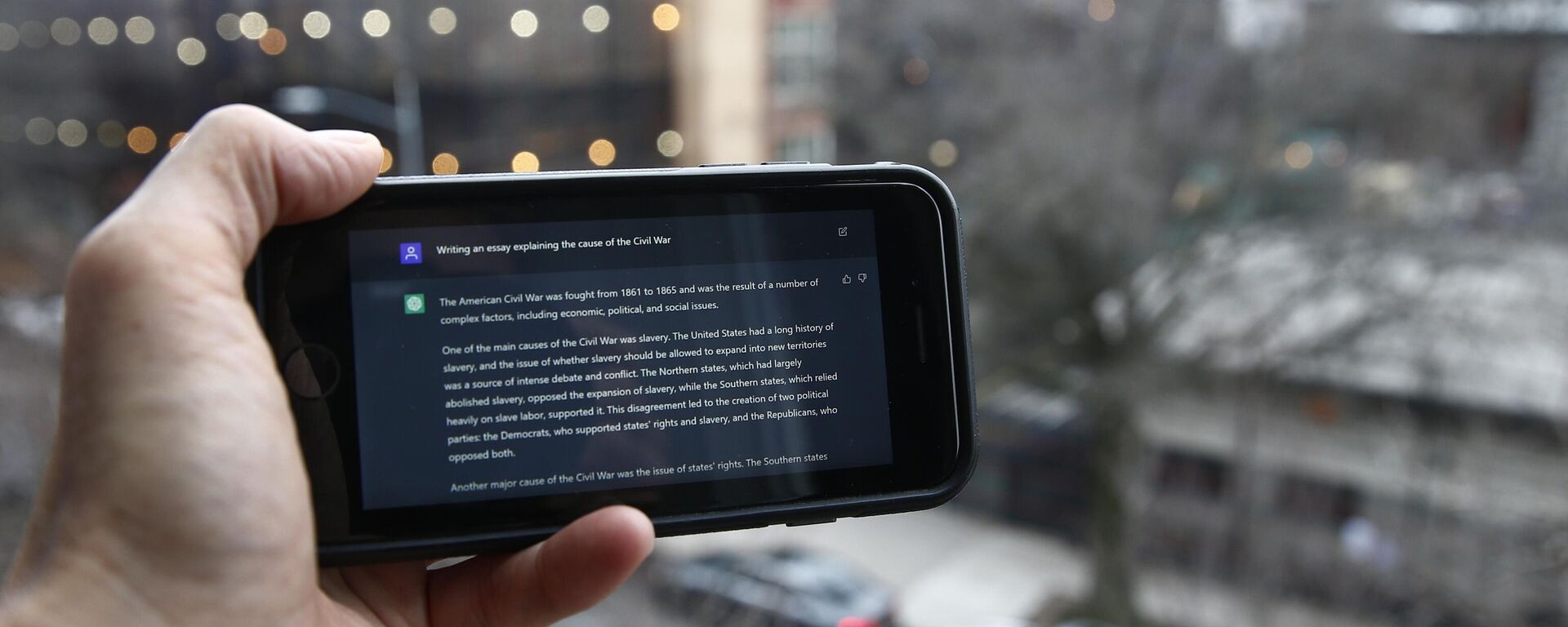https://sputnikglobe.com/20230610/scientists-create-new-tool-to-detect-ai-based-chatbot-writing-1111044224.html
Scientists Create 'New Tool' to Detect AI-Based Chatbot Writing
Scientists Create 'New Tool' to Detect AI-Based Chatbot Writing
Sputnik International
OpenAI’s ChatGPT language model, which was launched in late November 2022, was met with mingled reaction due to its ability to mimic human conversations and generate unique texts based on users’ prompts.
2023-06-10T11:08+0000
2023-06-10T11:08+0000
2023-06-10T11:08+0000
beyond politics
scientists
study
artificial intelligence (ai)
language
chatbots
researchers
https://cdn1.img.sputnikglobe.com/img/107425/35/1074253587_0:100:1921:1180_1920x0_80_0_0_d969d9233b9cf61bb2086d4c47cb1446.jpg
Scientists have developed "a new tool" to detect the difference between real scientific papers and fake examples created by the Artificial Intelligence (AI)-based chatbot ChatGPT, a new study has revealed.According to the survey, the researchers trained the new program to identify key differences between 64 real studies published in the journal Science and 128 ChatGPT-generated counterfeits.The scientists said that the program flagged the AI-written papers more than 99% of the time and could correctly tell the difference between human-created and chatbot-generated paragraphs 92% of the time.The study revealed that ChatGPT-written papers differed from human text in at least four key aspects, including paragraph complexity, sentence-level diversity in length, punctuation marks and "popular words."The launch of OpenAI’s ChatGPT in late November 2022 prompted some to praise the language model for its professional applications, such as for developing code, while others have criticized its potential for abuse; it's been alleged that students are using the model to write essays.
https://sputnikglobe.com/20230401/rage-against-the-machine-italy-slaps-ban-on-chatgpt-1109024940.html
Sputnik International
feedback@sputniknews.com
+74956456601
MIA „Rossiya Segodnya“
2023
Oleg Burunov
https://cdn1.img.sputnikglobe.com/img/07e4/09/0b/1080424846_0:0:2048:2048_100x100_80_0_0_3d7b461f8a98586fa3fe739930816aea.jpg
Oleg Burunov
https://cdn1.img.sputnikglobe.com/img/07e4/09/0b/1080424846_0:0:2048:2048_100x100_80_0_0_3d7b461f8a98586fa3fe739930816aea.jpg
News
en_EN
Sputnik International
feedback@sputniknews.com
+74956456601
MIA „Rossiya Segodnya“
Sputnik International
feedback@sputniknews.com
+74956456601
MIA „Rossiya Segodnya“
Oleg Burunov
https://cdn1.img.sputnikglobe.com/img/07e4/09/0b/1080424846_0:0:2048:2048_100x100_80_0_0_3d7b461f8a98586fa3fe739930816aea.jpg
new study, ai-based chatbot, ai-based chatgpt, new toool to detect robot writing
new study, ai-based chatbot, ai-based chatgpt, new toool to detect robot writing
Scientists Create 'New Tool' to Detect AI-Based Chatbot Writing
OpenAI's ChatGPT language model, which was launched in late November 2022, met with a mixed response; it has the ability to mimic human conversations and generate unique texts based on users’ prompts.
Scientists have developed "a new tool" to detect the difference between real scientific papers and fake examples created by the Artificial Intelligence
(AI)-based chatbot ChatGPT, a new study has revealed.
First study author Heather Desaire, a professor at the University of Kansas, said in a media release that she and her colleagues “tried hard to create an accessible method so that with little guidance, even high school students could build an AI detector for different types of writing.”
According to the survey, the researchers trained the new program to identify key differences between 64 real studies published in the journal Science and 128 ChatGPT-generated counterfeits.
The scientists said that the program flagged the AI-written papers more than 99% of the time and could correctly tell the difference between human-created and chatbot-generated paragraphs 92% of the time.
The study revealed that ChatGPT-written papers differed from human text in at least four key aspects, including paragraph complexity, sentence-level diversity in length, punctuation marks and "popular words."
The launch of
OpenAI’s ChatGPT in late November 2022 prompted some to praise the language model for its professional applications, such as for developing code, while others have criticized its potential for abuse; it's been alleged that students are using the model to write essays.




